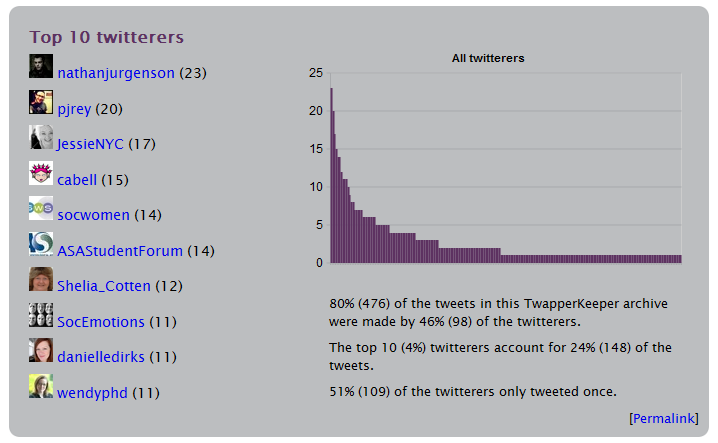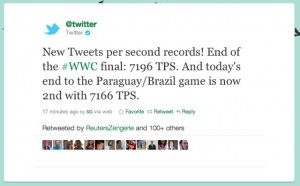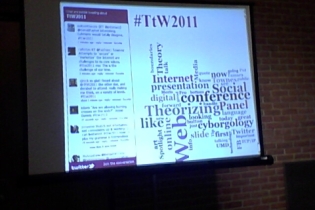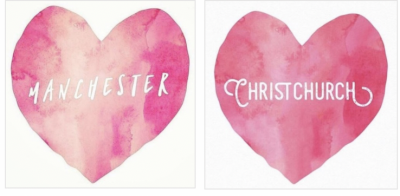Here are some summary statistics for the American Sociological Association annual meetings held this past week in Las Vegas. These statistics begin August 1st through the 25th.
TwapperKeeper archive URL: <http://twapperkeeper.com/hashtag/asa2011>
Total tweets: 3475
Total twitterers: 559
Total hashtags tweeted: 344
Total URLs tweeted: 336 more...








